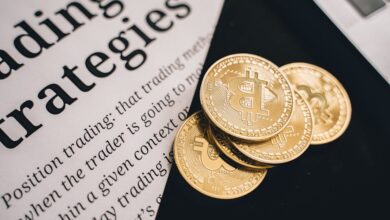Navigating Economic Turbulence: How Gold Serves as a Safe Haven Against Inflation and Uncertainty

In a world increasingly fraught with economic uncertainty and rising inflation, many investors are turning to gold as a reliable safe haven asset. Gold has long been revered for its intrinsic value and historical significance, often serving as a hedge against market volatility and currency devaluation. As inflation rates climb and geopolitical tensions rise, understanding the role of gold in a diversified investment portfolio becomes crucial. This article will explore the importance of gold as a safe haven asset during turbulent times, outline effective gold investment strategies including gold ETFs and physical gold, and provide an analysis of current gold market trends. By delving into gold prices, production, and global demand, we aim to equip you with the insights needed to navigate the complexities of gold investment, ensuring that you can leverage this timeless asset to protect your wealth against inflation and economic instability. Whether you're interested in gold coins, bullion, or the latest trends in sustainable gold mining, this comprehensive guide will shed light on the multifaceted world of gold investments.
- 1. The Role of Gold as a Safe Haven Asset: Understanding Its Importance in Times of Economic Uncertainty
- 2. Gold Investment Strategies: How to Use Gold ETFs and Physical Gold to Hedge Against Inflation
- 3. Analyzing Gold Market Trends: Insights into Gold Prices, Gold Production, and Global Demand
1. The Role of Gold as a Safe Haven Asset: Understanding Its Importance in Times of Economic Uncertainty
In times of economic uncertainty, gold has long been revered as a safe haven asset, providing investors with a reliable means of preserving wealth. The intrinsic value of gold, coupled with its historical significance, makes it an attractive option during inflationary periods or market volatility. Understanding its importance requires a closer look at several factors that contribute to the appeal of gold as a hedge against economic instability.
Gold investment has been a cornerstone of wealth preservation for centuries. Unlike fiat currency, which can be devalued due to inflation, gold maintains its purchasing power over time. This characteristic is particularly vital during inflationary periods, where rising prices can erode the value of currency. As central banks often increase their gold reserves in response to economic crises, the demand for gold tends to rise, driving up gold prices and reinforcing its status as a safe haven asset.
The gold market trends indicate that when economic indicators signal downturns—such as recessions, geopolitical tensions, or financial crises—investors flock to gold bullion and gold coins as a secure investment. With the rise of gold ETFs and gold futures, investors now have more options for accessing the gold market without needing to hold physical gold. However, many still prefer tangible assets like gold bars or gold jewelry, as these items not only serve as investments but also carry cultural and aesthetic value.
The relationship between gold and inflation is crucial for understanding its role as a hedge. Historically, gold has outperformed other asset classes during inflationary cycles, making it an essential part of a diversified investment portfolio. Moreover, global gold demand is influenced by various factors, including the jewelry industry, technology applications, and even emerging trends like sustainable gold mining practices, which appeal to environmentally conscious investors.
As economic uncertainty looms, the gold trade remains robust, with gold mining and gold refining industries adapting to meet the growing demand. The rise of luxury gold products and gold collectibles also reflects the evolving market landscape, showcasing how gold continues to attract investors. Additionally, the emergence of cryptocurrencies has sparked debate about gold and cryptocurrency's relative safety as investments. While cryptocurrencies are viewed as a modern alternative, gold's long-standing reputation as a stable store of value remains unmatched.
In conclusion, the importance of gold as a safe haven asset cannot be overstated, especially during times of economic uncertainty. Its ability to retain value, coupled with dynamic market trends, makes it an essential consideration for investors looking to hedge against inflation and safeguard their wealth. As global economic conditions continue to fluctuate, the timeless allure of gold will likely endure, ensuring its place in the investment landscape for years to come.
2. Gold Investment Strategies: How to Use Gold ETFs and Physical Gold to Hedge Against Inflation
When considering gold as a hedge against inflation and economic uncertainty, investors often explore various strategies, particularly focusing on gold ETFs and physical gold. Each approach has its own set of advantages and considerations, depending on individual investment goals and market conditions.
Gold ETFs (Exchange-Traded Funds) have surged in popularity due to their convenience and liquidity. These funds allow investors to gain exposure to gold prices without the need for physical storage. A significant advantage of gold ETFs is that they track gold market trends closely, making them an effective tool for those looking to capitalize on fluctuations in gold prices. Additionally, many gold ETFs invest in gold bullion or gold mining companies, providing diversification while keeping costs relatively low. Investors should be aware of the expense ratios associated with these funds, as they can impact overall returns.
On the other hand, investing in physical gold—such as gold bars, gold coins, or gold jewelry—offers a tangible asset that many consider a more secure store of value during times of economic instability. Physical gold is often viewed as a safe haven asset that can withstand market volatility. Moreover, owning physical gold means investors are not directly affected by fluctuations in the gold ETFs' market performance. However, one must consider storage and insurance costs when investing in physical gold, as these can add to the overall investment expense.
Both strategies present unique opportunities to hedge against inflation. As inflation rises, the purchasing power of currency diminishes, often leading to increased global gold demand as investors seek out gold to protect their wealth. Central banks have historically turned to gold reserves during periods of economic uncertainty, further solidifying its role as a reliable investment.
For those looking to invest in gold for the long haul, combining these strategies can be beneficial. One might allocate a portion of their portfolio to gold ETFs for liquidity and market responsiveness while also holding a reserve of physical gold for security. Additionally, understanding the gold market analysis and trends can guide investments not just in gold but across related sectors, such as sustainable gold mining and gold recycling, which are becoming increasingly relevant in today’s economy.
In summary, whether through gold ETFs or physical gold, investors have viable options to hedge against inflation and safeguard their wealth. As market dynamics evolve, the importance of gold and its investment strategies remain central to navigating economic uncertainty.
3. Analyzing Gold Market Trends: Insights into Gold Prices, Gold Production, and Global Demand
The gold market has historically been viewed as a safe haven asset, especially during periods of inflation and economic uncertainty. Analyzing gold market trends is crucial for investors looking to navigate the complexities of gold prices, production, and global demand.
Gold prices are influenced by a variety of factors, including geopolitical tensions, currency fluctuations, and central banks' gold reserves. For instance, during times of economic instability, many investors turn to gold as a hedge against inflation, driving up demand and, consequently, gold prices. In recent years, there has been a noticeable increase in the purchase of gold ETFs (exchange-traded funds), which allow investors to gain exposure to gold without the need to hold physical gold. This trend reflects a growing interest in gold investment as a more accessible way to diversify portfolios.
Gold production remains a vital aspect of the gold market. Major gold mining countries, including China, Australia, and Russia, continually strive to increase their output. The gold mining industry is also gradually shifting towards sustainable gold mining practices, aiming to reduce the environmental impact of extracting this precious metal. Additionally, gold recycling has become an essential component of the market, as it provides a more sustainable source of gold without the need for new mining.
Global demand for gold is not limited to investment purposes; it also encompasses gold jewelry, gold technology, and gold collectibles. In emerging markets, especially in Asia, the demand for gold jewelry remains strong, often driven by cultural significance and gifting traditions. Simultaneously, industries utilizing gold for technology applications have also contributed to increased consumption.
As we explore gold market trends, the emergence of gold and cryptocurrency has sparked discussions about the future of gold as an investment. While cryptocurrencies present alternative assets, gold continues to hold its ground as a reliable store of value. The historical context of the gold standard further emphasizes this point, showcasing gold's long-standing role in the global economy.
In conclusion, understanding gold market analysis requires a thorough examination of gold prices, production dynamics, and global demand factors. With the ongoing fluctuations in economic conditions, gold remains a crucial asset for investors looking to secure their wealth against inflation and uncertainty. Utilizing insights into gold trends can empower investors to make informed decisions, whether they are interested in gold bullion, gold bars, gold coins investing, or luxury gold collectibles.
In conclusion, gold remains a steadfast safe haven asset, particularly in times of economic uncertainty and inflation. As we explored, its historical significance and intrinsic value make it an essential component of any diversified investment portfolio. Whether you choose to invest in physical gold, such as gold coins and bars, or opt for gold ETFs, understanding the dynamics of gold market trends is crucial to making informed decisions.
The insights into gold prices, production, and global demand highlight the ongoing importance of this precious metal, especially as central banks accumulate gold reserves to fortify their economies. Moreover, with the rise of sustainable gold mining practices and the growing interest in luxury gold products, the landscape of gold investment continues to evolve.
As investors navigate the complexities of inflation and economic shifts, gold stands out not only as a hedge but also as a resilient asset that has withstood the test of time. By keeping abreast of gold market analysis and understanding the nuances of gold futures and gold recycling, individuals can better position themselves to leverage the benefits of gold in the face of uncertainty. Ultimately, whether for wealth preservation or as a hedge against volatility, gold investment remains a prudent choice for those looking to safeguard their financial future.
References:
[Include relevant references here]




